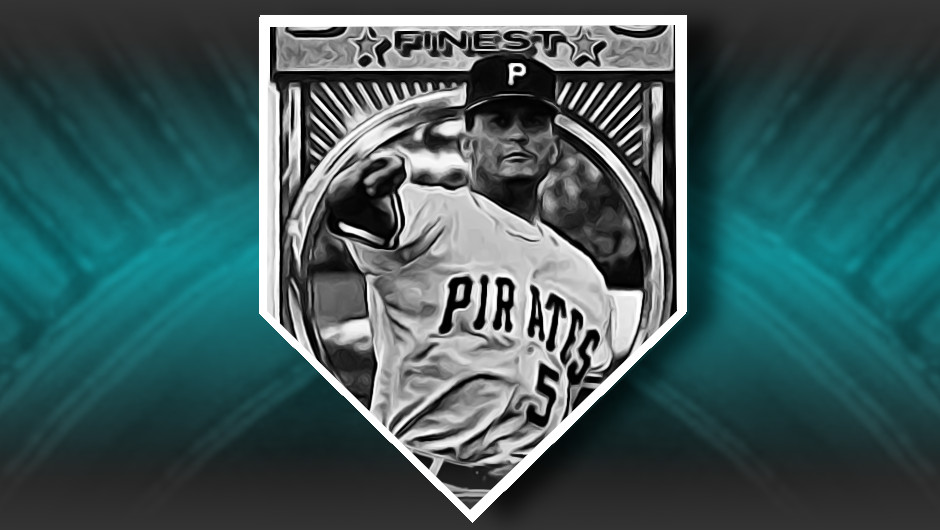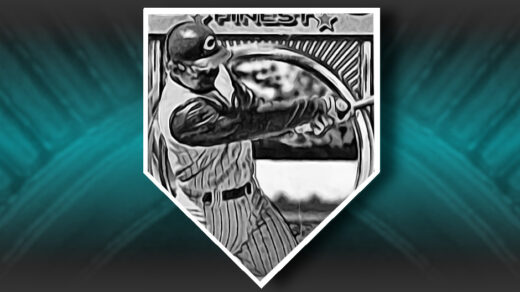Baseball is a sport about numbers. Hits. Plate Appearances. Batting Average. Fielding Percentage. The game is divided into 9 innings, and you get even more numbers if the score is tied. Players are identified on the field by their uniform number. They are honored with elaborate ceremonies when having this number “retired.” In any other situation being known only by a number would be bad: As a faceless employee at a large company; as the third wheel in a relationship; or standing in the middle of a police lineup as Prisoner 24601.
Players take their uniform number seriously. Sometimes the numbers signify seniority with a team. Some teams have groups of numbers that indicate a player is not yet a permanent part of the lineup. Carlos Garcia is depicted on his 1993 Finest card wearing #51 (and looking eerily like Charlie Sheen at that angle). He had played in all of 36 games with the Pirates over the previous three seasons. A shortstop by training, Garcia was blocked from making the lineup on a regular basis by Jay Bell, who would go on to represent the Pirates in the 1993 All-Star Game.
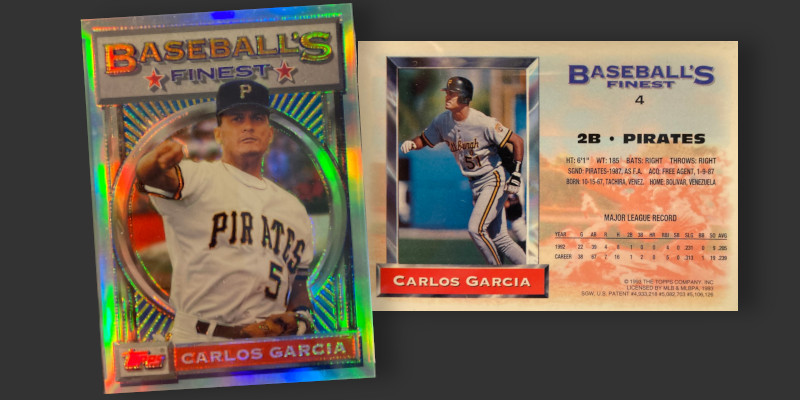
In 1993 he got his chance. The Pirates traded away starting second baseman Jose Lind after the ’92 season and moved their talented backup SS to 2B. Garcia won twice, as he grabbed not only a starting role but a coveted uniform number as well. His favorite player growing up had been fellow Venezuelan Dave Concepcion who wore #13 throughout his career. That number had been occupied by the departed Lind, leaving both second base and the uniform number open for Garcia.
Garcia outperformed his predecessor. While not known for prolific defensive maneuvers, he did manage to nab the National League’s top spot that year for double plays at second base. Offensively he played like a typical second baseman, which is to say it didn’t help. Still, his performance was good enough to replace Jay Bell as Pittsburgh’s lone representative when the city hosted the 1994 All-Star Game.
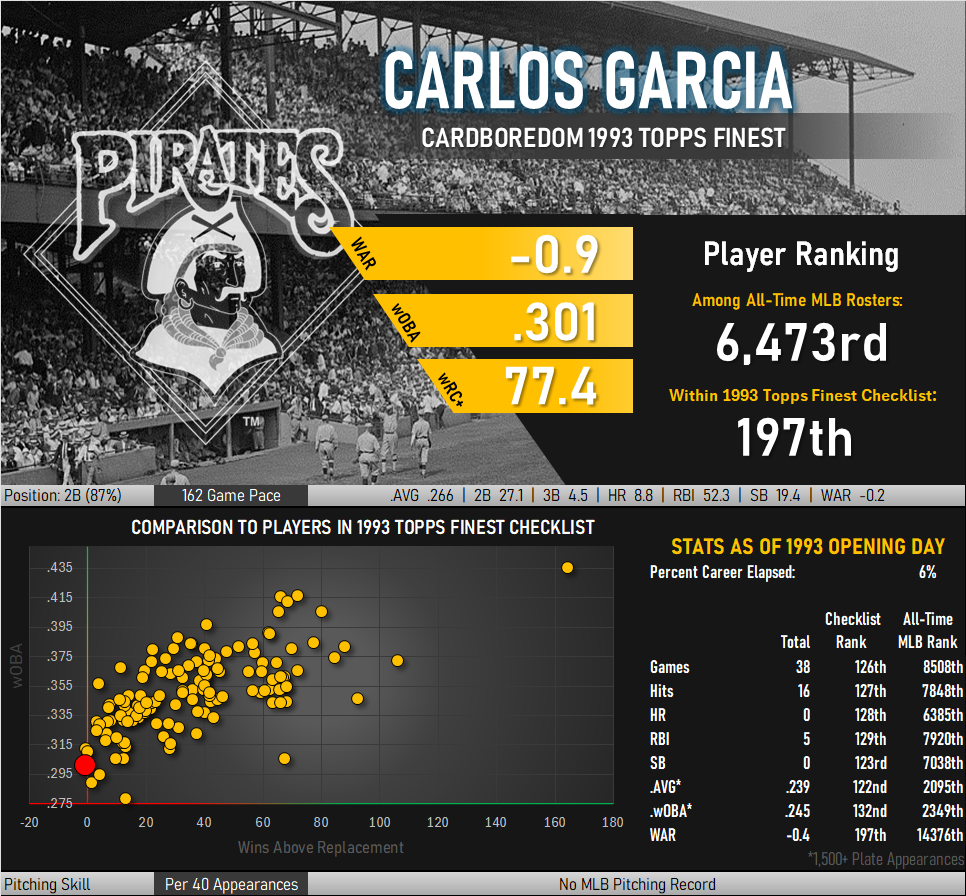
Looking at the above illustration, Garcia appears to have been one of the least effective players appearing in the set. The story ends well, as he has since gone on to an extensive coaching and managing career in Mexico. The least impressive ballplayers often make the best coaches as they don’t assume every upcoming athlete has the same natural skill that they exhibited and are willing to work with those who want to learn.
Although he is not a household name in ’93 Finest, Garcia is one of two players to make appearances on multiple cards. He is prominently pictured on the back of Scott Cooper’s card #7, almost blocking the Boston third baseman from view. With interleague play still four years away, the picture was likely taken when the teams faced off against each other in Florida.
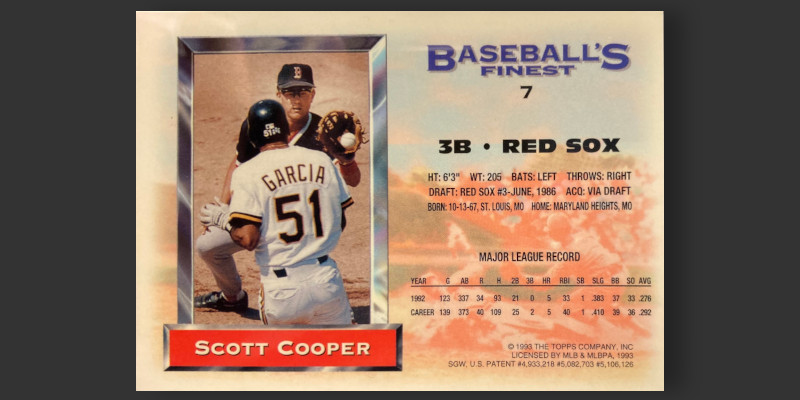
Another Carlos Garcia Card to Explore: 1991 Fleer
There are not a lot of exciting cards featuring the Pittsburgh infielder during his career. The ’93 refractor is probably the highlight of his cardboard appearances. With that in mind, I looked for something at the opposite end of the spectrum.
The result is card #37 from the 1991 Fleer set, an issue so well-known for collector disinterest that it still serves as the benchmark for bad design. As the Pontiac Aztek of baseball cards and it still haunts me to this day. In 1991 I visited a card shop and asked for three packs of cards from a red display box. Handing over somewhere close to $2, I opened them to discover a pile of school bus-colored cards rather than the 1991 Topps I had expected. That turned out to be the last time I stepped foot in the store for several decades. Earlier this year I went back. Sitting on a folding table was a pile of wax boxes in various states of disarray with handmade banner hanging nearby bearing the words “JUNK WAX!” One of those boxes was nearly untouched, missing only 3 packs of ’91 Fleer from the top row. I may have been the only dupe that ever bought them in the last 30 years.

Garcia’s card appears early in the set, which was a sign of respect in that era of Fleer’s production. The company arranged checklists by teams and ranked them by how well they performed in the previous year. Garcia was making his debut alongside a Pirates team that nearly captured the 1990 NL pennant.
Garcia photobombs the back of another player’s card in the 1993 Finest set. Perhaps he was returning an earlier favor, as Hall of Famer Andre Dawson can be seen jogging across the Wrigley Field grass in the background of the ’91 Fleer card. The photo is reminiscent of late 1950s to mid 1970s staged poses that defined what cards looked like. Fleer captured the other popular pose (mugshot of a dude in a cap) on the back. Yellow borders define the set, and Pittsburgh’s color scheme actually work with this particular card.






